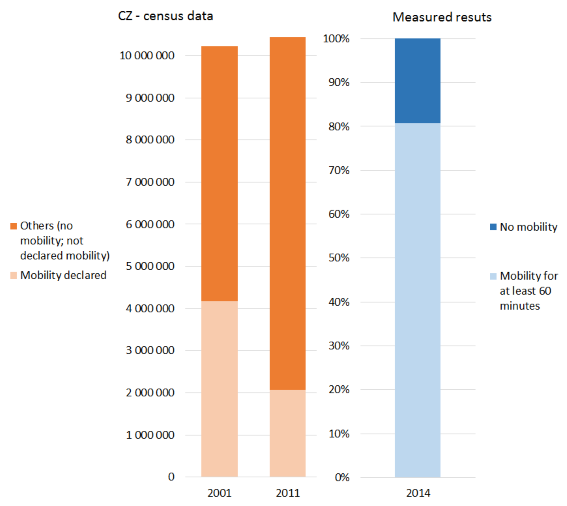ČSÚ (Czech Statistical Office) runs population and housing census. Part of the questionnaire used in the census related to mapping of mobility patterns showed the highest rate of unanswered questions. In the case of the last census in 2011 this dimension came into such adverse circumstances that the results are incomparable with 2001 data (source: ČSÚ, 2014).

While in 2001 questions about the mobility remained unanswered by 12% of respondents with censed economic activity, in 2011 the figure was 33%. The reason may not be the reluctance to answer questions. In our experience, traditional models of spatial interactions gain a significantly higher diversity and dynamism. Current census techniques may not be simply well adjusted to new reality. The fact is that the number of people not showing any mobile patterns during the day is only about 20% of the total population. Others commute from their daily routines for a longer or shorter period of time.
As this example shows, decisions in matters of mobility suffers from a lack of reliable and accessible data. The practical usefulness of these data is complicated. That leads to the fact that local government, professionals and general public can use the default information to limited extend, or not at all.
